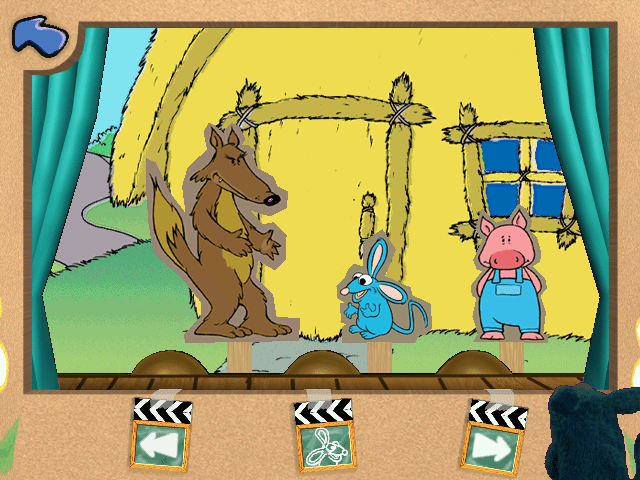You’re watching Bear in the Big Blue House. It’s a beautiful day, the sun is shining, and Bear is feeling…well, a little restless. He’s been watching the birds outside, soaring effortlessly through the sky, and he starts to wonder—why can’t he fly? He’s big and strong, but he’s stuck on the ground! As a child, this question might have tickled your imagination, too. Why can’t bears fly? Let’s dive into the world of bears and the science of flight to find the answer.

Image: myabandonware.in
The reason bears can’t fly is a simple one: they weren’t built for it. Evolution has shaped them to thrive in a different environment, the forest floor, where their strength and agility help them find food, raise their young, and protect themselves from danger. To fly, a creature needs wings and the right musculoskeletal system. Bears don’t have wings, and their bodies are designed for walking, running, and climbing—not for soaring through the air.
Evolutionary Adaptions and the Magic of Flight
Our world is filled with amazing creatures—from majestic eagles to tiny hummingbirds—each perfectly fitted for its own way of life. Take the eagle, for instance. Its wings, incredibly powerful and spaning several feet, are designed for gliding effortlessly over vast landscapes. Their bodies are light, their bones hollow, and their muscles are strong but efficient, allowing them to stay airborne for extended periods. But bears? Bears are built for strength and resilience, able to carry heavy loads and traverse dense forests. Their bodies are designed for power, not for lightness, and their limbs are robust, perfect for walking or climbing, not for flapping against the wind.
Think about it this way: imagine a butterfly trying to carry a large log. It would never work, right? The butterfly simply isn’t built for that kind of heavy lifting. Similarly, a bear trying to flap its nonexistent wings wouldn’t get very far. Evolution has equipped each creature with the tools they need to survive in their particular environment, ensuring their success.
The Science of Flight: More Than Just Wings
While we see wings as the obvious clue to flight, they are only half of the story. Flight is a marvel of engineering, requiring a precise balance of aerodynamic forces, powerful muscles, and a lightweight structure. The way a bird’s wings are shaped, and the way they move them through the air, helps generate lift and thrust, allowing them to overcome gravity and take to the skies.
Imagine a bird’s wing as a small airplane. The shape of the wing, with its curved upper surface and flat lower surface, creates a difference in air pressure. The air flowing over the top moves faster, creating lower pressure, while the air flowing under the wing moves slower, creating higher pressure. The difference in pressure, called “lift,” pushes the wing, and the bird, upwards. This is just one of the secrets of flight.
Beyond the Basics: Exploring the Wonders of Flight
Learning about flight isn’t just about learning why bears can’t fly. It’s about appreciating the intricacies of the natural world, the marvels of evolution, and the ingenuity of living organisms. From the tiny hummingbird navigating a flower garden to the majestic albatross soaring above ocean waves, the world of avian flight is awe-inspiring.
If you’re fascinated by the wonders of flight, there’s a whole world of knowledge out there waiting to be explored. Pick up a book about birds, visit a bird sanctuary, or simply watch the skies for the magical spectacle of birds in flight. The more you understand about the science of flight, the more you’ll realize how amazing these creatures truly are.

Image: www.youtube.com
Bear In The Big Blue House Why Bears Can’T Fly
Bear in the Big Blue House: A World of Wonder and Imagination
Bear in the Big Blue House, with its catchy songs and quirky characters, is a wonderful gateway to learning and exploration. The show encourages curiosity and asks questions about the world around us, like the very question we started with: why can’t bears fly? While the show doesn’t delve into the complexities of evolutionary science, it does plant the seeds of wonder, encouraging kids to explore the world with their own imaginations.
Just like Bear in the Big Blue House, we can all find ways to explore the world around us, looking for answers and learning new things. So next time you see a majestic bird in the sky, or you imagine a world where bears can fly, remember the science behind the magic, and the wonder of the natural world that surrounds us. And remember, even though bears can’t fly, they can still offer us a world of fun, laughter, and learning!





